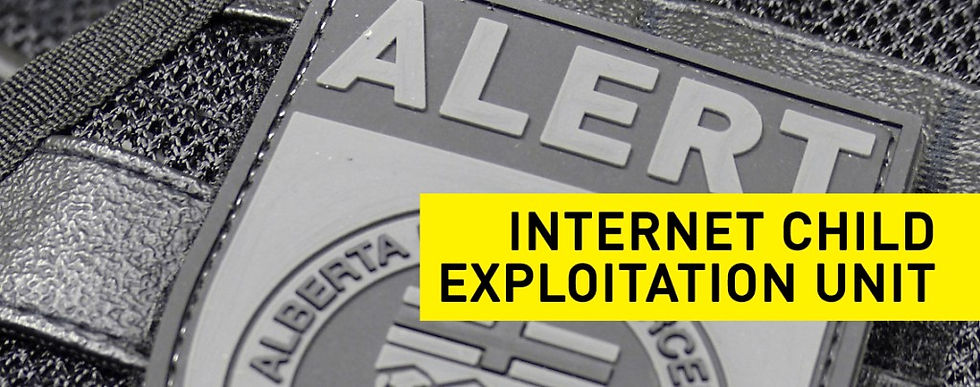As a parent, protecting our children is always a top priority. In today’s digital age, one of the biggest threats to their safety is online child sexual exploitation (OCSE). With the internet playing such a central role in our children’s lives, it’s critical that we, as parents, understand the dangers and teach our kids how to navigate the online world safely.
Understanding Online Child Sexual Exploitation
Online child sexual exploitation is a serious and growing issue. In Canada, reports of these crimes increased by 45% between 2022 and 2023. Predators use the anonymity of the internet to target children, employing tactics such as grooming, capping, sextortion, and the distribution of explicit content.
Here’s what parents need to know about these tactics:
Grooming: Predators often build trust with children by pretending to be someone they’re not—a friend, a peer, or even a potential romantic interest. This process can happen over days, weeks, or even months, making it hard to detect.
Capping: This involves predators recording or capturing screenshots of children during video calls, often without their knowledge. These images can then be used for blackmail or shared online.
Sextortion: This form of blackmail occurs when a predator threatens to share explicit images or videos of a child unless further demands are met, such as sending more content or performing specific actions.
Distribution of Explicit Content: Once images or videos are shared, they can spread rapidly online, causing lasting emotional and psychological harm to the victim.
Steps Parents Can Take to Protect Their Children
1. Open the Lines of Communication
Talking to your kids about online safety is the first and most important step. Make sure they feel comfortable coming to you if something seems off. Use age-appropriate language and explain that not everyone online has good intentions. Regularly discuss the types of information they should and shouldn’t share online, such as personal details, photos, or videos.
2. Set Clear Boundaries and Rules
Establish rules about internet usage, including:
Which websites and apps they can use.
How much time they can spend online.
What types of interactions are acceptable.
Encourage them to use privacy settings and avoid accepting friend requests from people they don’t know in real life.
3. Teach Them to Recognize Red Flags
Help your children understand what grooming looks like. Explain that if someone they meet online:
Asks for personal details or photos.
Tries to isolate them by discouraging them from talking to parents or friends.
Shares inappropriate content or asks them to keep secrets.
These are warning signs, and they should tell you immediately.
4. Use Technology to Your Advantage
Install parental control apps to monitor online activity and block inappropriate content. Familiarize yourself with the platforms your kids use and stay up-to-date on new apps or social media trends. Knowing how these platforms work will make it easier to spot potential risks.
5. Create a Family Safety Plan
Public Safety Canada offers excellent resources, including a discussion guide for parents and caregivers. Develop a family safety plan that includes:
Guidelines for using devices.
Steps to take if your child encounters inappropriate content or feels unsafe online.
Regular family check-ins to review online activity.
NOTE - Even supposedly "Child Safe" websites like "CrazyGames / Poki and other FREE online gaming content forums "DO NOT" police the "Advertisements" and have been documented to be Adult in content by advertising sexually explicit movies, TV shows & in APP games.
Watch for:
Provocative Adds using sexually enhanced content.
Links to other sites hidden within game's "In Game Links".
Team Speak - Some games enable team speak through the game which does not have a moderator and can become explicit in nature regardless of in game attendee's age.
The Role of the Community and Government
As parents, we can’t do this alone. It’s important to lean on community resources and advocate for stronger protections. The Government of Canada’s Online Harms Act, introduced in 2024, holds online platforms accountable for harmful content, including child exploitation. Familiarize yourself with the legislation and how it supports your efforts to protect your children.
What to Do If Something Goes Wrong
If your child experiences online exploitation, it’s vital to act quickly. Report the incident to local authorities and organizations like Cybertip.ca. Provide your child with emotional support and consider seeking professional help to address any trauma.
Speak to your local Law Enforcement
Together, We Can Make a Difference
By staying informed and vigilant, we can reduce the prevalence of online child exploitation. Empower your children with the knowledge and tools they need to navigate the digital world safely. Together, as parents, caregivers, and a community, we can create a safer environment for our kids to thrive both online and offline.
RESOURCES:
Advanced Cardiovascular Life Support - Heart & Stroke Foundation
Basic Life Support BLS- CPR Course 09:00am | Saving Grace Medical
Advanced Cardiovascular Life Support Course | Saving Grace Medical
Online Dangers: Cyberbullying and Online Child Sexual Exploitation - Canada.ca
Backgrounder – Government of Canada introduces legislation to combat harmful content online, including the sexual exploitation of children. - Canada.ca

Author - Saving Grace Medical Academy Ltd
Jason T
Retired EMT - Heart & Stroke Foundation Senior Instructor







